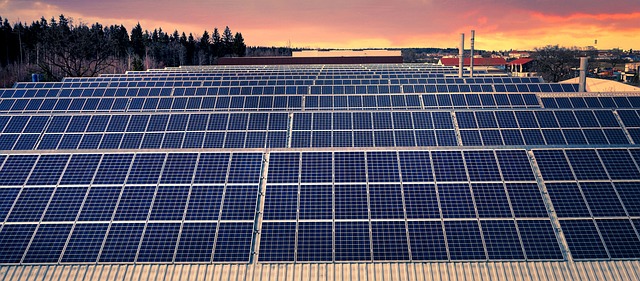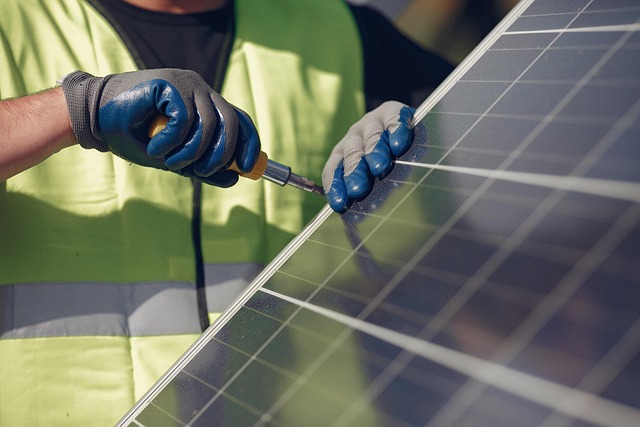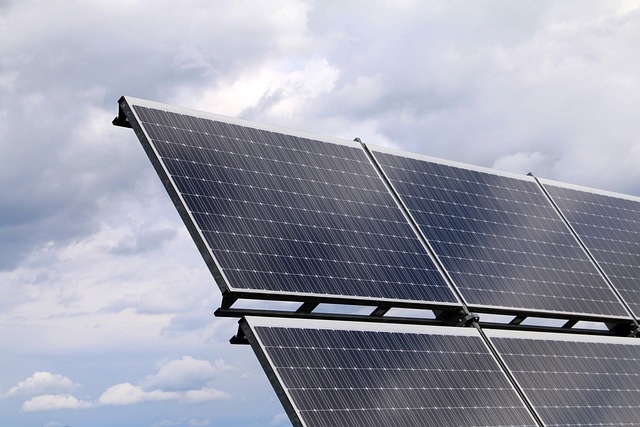Photovoltaic (PV) panels are transforming clean energy access in real estate by converting sunlight to electricity through semiconductor technology. Integrating these panels enhances property value, reduces utility costs, and makes developments eco-friendly, appealing to environmentally conscious buyers and renters. Government incentives further offset installation costs, though challenges include initial setup expenses, weather dependency, maintenance, and long-term viability.
“Unleash the potential of clean energy with photovoltaic (PV) panels—a revolutionary technology transforming the way we power our world. This article explores the intricate workings of PV systems and their growing significance in the real estate sector. From understanding the basics to delving into integration strategies, we examine how solar power benefits properties and communities alike. Additionally, we weigh the advantages and challenges of deploying PV panels, offering insights for developers navigating this sustainable energy landscape.”
Understanding Photovoltaic Panels: How They Work

Photovoltaic (PV) panels are a revolutionary technology transforming the way we harness clean energy, especially in the real estate sector. These panels work by converting sunlight directly into electricity through a process that involves no moving parts. Each panel is composed of numerous photovoltaic cells, which are essentially semiconductors designed to absorb photons from the sun.
When sunlight hits these cells, it initiates a flow of electrons, generating direct current (DC) electricity. This power can then be used immediately or stored for later use, ensuring a consistent and sustainable energy supply. The efficiency of PV panels has significantly improved over time, making them an attractive option for homeowners and businesses alike to reduce their carbon footprint and utility costs.
Integrating Solar Power into Real Estate Developments

Integrating solar power into real estate developments is a growing trend that offers significant benefits for both developers and residents. By incorporating photovoltaic (PV) panels into buildings or as standalone structures, developers can provide clean, sustainable energy solutions while enhancing the value of their properties. This approach not only reduces electricity costs for tenants or homeowners but also contributes to a greener environment by lowering carbon footprints.
In the competitive real estate market, embracing renewable energy technologies like solar power can be a strategic move. It positions developments as eco-friendly and future-proof, appealing to environmentally conscious buyers and renters. Moreover, many governments offer incentives, such as tax credits or rebates, to encourage the adoption of solar energy in new constructions, making it a financially attractive option for developers.
Benefits and Challenges of Deploying PV Panels

Deploying photovoltaic (PV) panels offers numerous benefits, especially in the context of real estate. One of the most significant advantages is the potential for substantial cost savings on energy bills. These panels harness the power of sunlight, providing a clean and renewable energy source that can reduce dependency on traditional grid electricity. This shift towards sustainability also enhances the environmental footprint of properties, making them more attractive to eco-conscious buyers and tenants. Additionally, many governments offer incentives, grants, or tax benefits to encourage the adoption of solar power, further offsetting installation costs over time.
However, challenges exist when integrating PV panels into real estate projects. Initial installation costs can be high, particularly for larger systems designed to meet significant energy demands. Weather conditions play a critical role; cloudy or shade-prone locations may not realize the full potential of their solar installations. Maintenance and panel cleaning are also essential considerations, as dirty or blocked panels can reduce efficiency. Moreover, property owners must consider the long-term viability of solar power, taking into account changes in energy regulations and technological advancements that might impact the overall return on investment.






